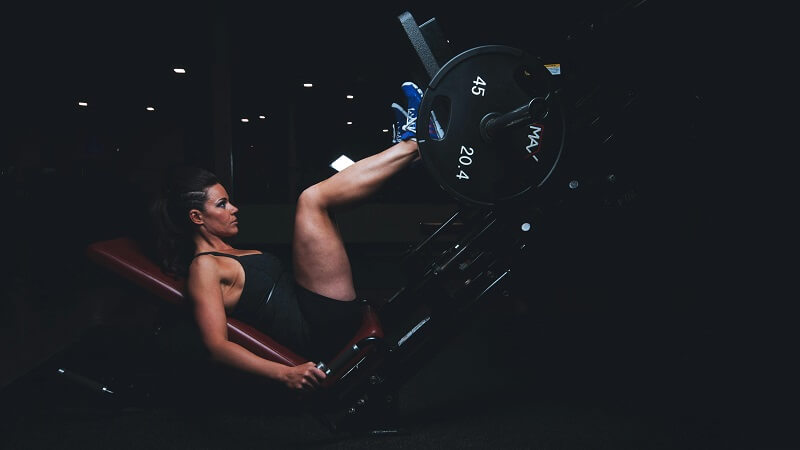In the age of YouTube tutorials and TikTok hacks, it’s tempting to believe that you can fix just about anything yourself—from a kitchen sink to your treadmill. After all, how hard can it be, right? When it comes to gym equipment repair, the answer is harder than you think. And the consequences of getting it wrong can be costly, dangerous, and downright frustrating.
Whether it’s a malfunctioning treadmill or a strength-training machine with frayed cables, attempting to DIY your fitness equipment repair is a gamble that could leave you injured or out of pocket. In this guide, we’ll unpack exactly why these fixes are best left to the professionals, which types of repairs you should never try on your own, and how trusting the experts can actually save you money and peace of mind in the long run.
Why Professional Gym Equipment Repair Matters
Let’s be clear: fitness machines are more than just hunks of metal and plastic.
They’re highly engineered systems, often powered by complex electronics and built with precise mechanics. When something goes wrong, the cause isn’t always obvious, and misdiagnosing the issue can create even bigger problems.
Here’s why turning to certified professionals is a smart, safety-first decision:
Safety Above All Else
Above all, fitness equipment should be safe to use. When improperly repaired or maintained, machines like treadmills, rowers, and multi-gym stations can pose real hazards. A slipping treadmill belt, for example, can cause serious falls.
A strength machine with a faulty cable might snap during use, risking severe injury. Professional technicians are trained to assess not only the primary issue but also any underlying mechanical or electrical risks. They’re also held to industry safety standards and procedures to ensure that everything is secure before the equipment is put back into action.
Precision Repairs with Specialized Tools
Even the handiest homeowner doesn’t usually have access to the torque wrenches, diagnostic software, or brand-specific parts needed for equipment repair. Technicians come equipped with all the right tools for the job—and more importantly, they know how to use them. That means quicker, more accurate fixes and far less guesswork.
Save Money by Avoiding Repeat Mistakes
Sure, a DIY fix might save you a service call today. But what if your quick fix actually damages another component or misses a deeper problem entirely?
You could wind up calling a pro anyway, except now the repair costs more than it would have if you’d called them in the first place. Certified repair services offer diagnostics and proactive maintenance that can prevent future breakdowns altogether.
Types of Repairs You Should Never Attempt Yourself
While some light maintenance is fine for gym owners and fitness enthusiasts, certain repairs should never be done without professional training. Here are a few to keep your hands off:
Treadmill Belt Adjustments and Motor Repairs
If your treadmill belt is slipping or the motor seems off, don’t be tempted to poke around. Treadmills are deceptively complex machines that require precise alignment, tension calibration, and sometimes electrical rewiring. Getting it wrong can damage the motor, wear out the belt, or worse, cause an accident during use.
Resistance and Tension Systems in Ellipticals or Rowers
Elliptical machines use heavy flywheels and magnetic or electronic resistance systems. Trying to repair these on your own could result in the machine seizing up or becoming a silent death trap if you misjudge the tension release mechanisms.
Cable Replacement on Weight Machines
Cable-based machines are common in both home gyms and commercial fitness centers. Over time, these cables can fray or snap, putting users at risk.
Replacing them requires not only the right parts but also precise installation to ensure even tension, correct tracking, and secure fastenings. A poorly replaced cable can come loose mid-lift—definitely not something you want happening.
Electrical Repairs or Display Issues
Power failures, unresponsive touchscreens, or erratic speed controls usually point to issues with circuit boards, wiring, or control panels. These repairs involve a genuine risk of electrical shock and require a background in both electronics and the equipment’s operating software.
Maintenance You Can Do
Not every gym equipment issue requires a service call. Regular preventive maintenance can extend the life of your machines and reduce the need for major repairs. Here are some tasks that are safe for users to handle:
- Clean your machines regularly. Sweat is corrosive and can damage surfaces and wiring over time.
- Inspect bolts and fasteners weekly. Tighten anything that feels loose.
- Check belts and cables for wear. Flag fraying or cracking to a pro ASAP.
- Lubricate moving parts. Use manufacturer-approved lubricants and follow the guidelines in your owner’s manual.
- Vacuum around the equipment. Dust buildup can cause motors and fans to overheat.
Think of this as the dental floss of gym equipment care—not glamorous, but absolutely essential.
The Real Cost of Getting It Wrong
Let’s say you decide to DIY a repair anyway. What’s the worst that could happen?
- Voiding the Warranty: Many fitness equipment brands include clauses that void your warranty if unauthorized repairs are made. That quick fix could turn into a costly replacement.
- Causing Additional Damage: You might “fix” one issue but overlook another, creating further internal wear or misalignment.
- Injuring Yourself or Others: When a machine fails mid-use, it can cause bruises, broken bones, or even life-threatening injuries. That’s a steep price to pay for skipping a technician.
- Downtime: If you’re operating a commercial gym or even rely on your home gym for regular training, the longer your equipment is offline, the more disruptive (and demotivating) it becomes.
Professional Repair Services Add Long-Term Value
Hiring certified technicians doesn’t just protect your equipment—it protects your time, your finances, and your physical well-being. Professional repair companies offer:
- Expert diagnostics to catch issues early
- Access to OEM parts for brand-specific needs
- Scheduled maintenance plans to reduce downtime
- Record-keeping to track repairs and keep warranties intact
- Peace of mind, knowing your machines are safe and reliable
Stick to Workouts, Not Wrenches
It’s tempting to tackle your own fixes, especially when it seems like a simple adjustment or a way to save a few bucks. But when it comes to gym equipment repair, DIY solutions often do more harm than good. Instead of risking your health, damaging expensive machines, or voiding warranties, invest in professional repairs. With expert care, your equipment will run smoother, last longer, and stay safer, leaving you to focus on what really matters: your fitness.
*Sponsored Blog Post

